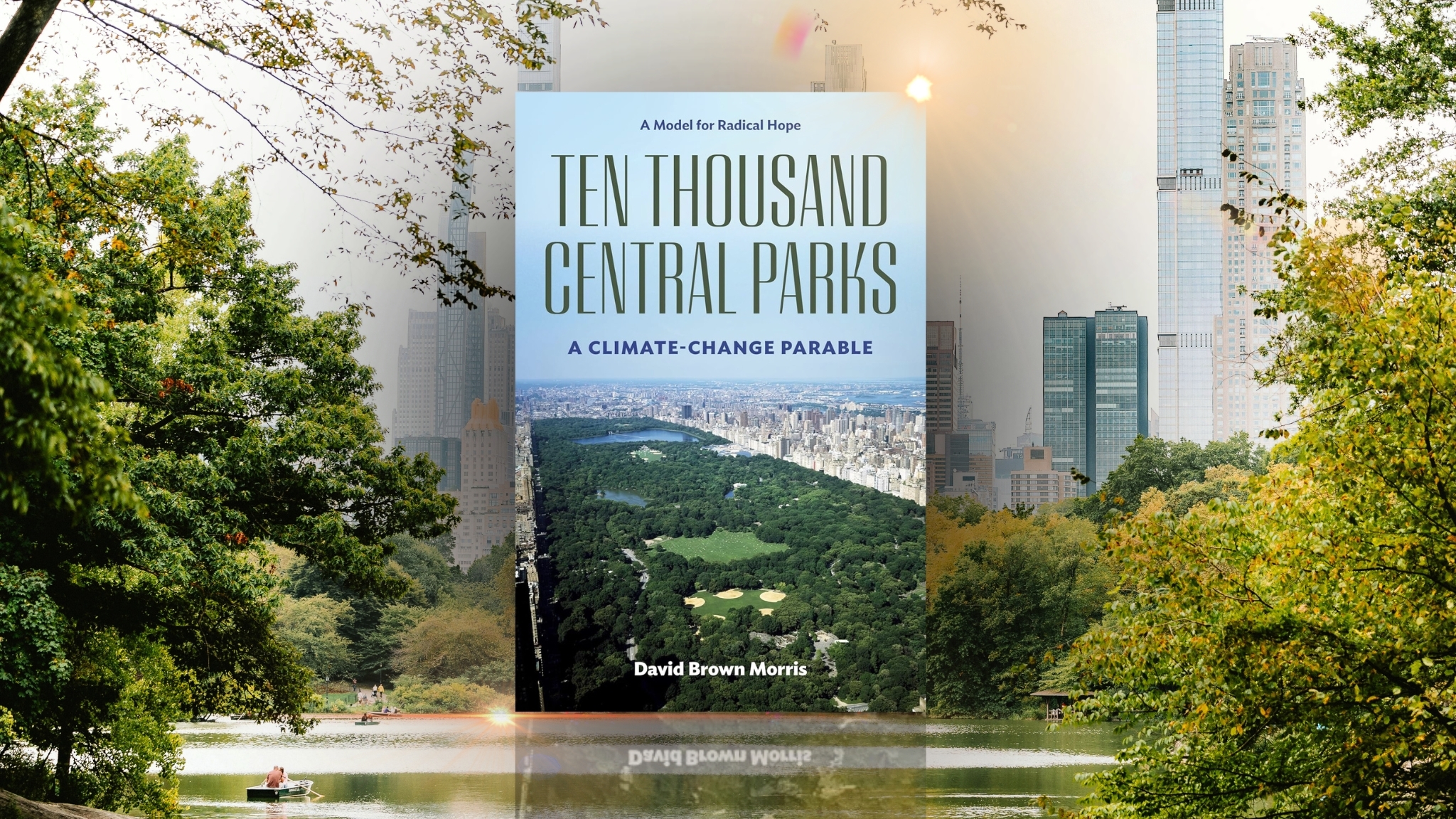Ten Thousand Central Parks: A Climate-Change Parable by David Brown Morris
The story of Central Park stretches from its nineteenth-century origins — with an unlikely cast of colorful characters — to the experiences of some 42 million visitors each year, and no single book could encompass it. Ten Thousand Central Parks: A Climate-Change Parable nonetheless attempts the impossible. It seeks to uncover the layered richness of a creation that is far more than just another familiar New York City landmark.
Why do we need more Central Parks? Lots more? Americans today spend on average 90% of our lives indoors. (And another 6% in vehicles.) Cities are also home to over half the world’s population — more than 4 billion people — a figure predicted to double by 2050. City-dwellers need parks as much as air, water, food, and shelter. Parks are necessities. We cannot survive cooped up watching wildlife videos. Urban parks, no longer an optional amenity, offer the green space that makes city-life livable.
Central Park is a model for radical hope in a deeply troubling era when we witness thousand-year floods, monster hurricanes, melting glaciers, and epic wildfires. Cities have turned into killing heat islands. Central Park, by contrast, shows how people can reconstruct urban environments in ways that serve generations to come. Dark or troubled times are no barrier. Built by immigrants immediately before, during, and after the Civil War, Central Park today receives more visitors annually than all of New York City’s vaunted museums and theaters combined. Visitors love Central Park, or so they say. It must speak to very basic human needs.
Central Park, in meeting human needs, is not a cookie-cutter model — for rote duplication — but a powerful incentive for thinking big. Its 843 acres create a giant green rectangle amid the tangled, sprawling, concrete-glass-and-steel grid that surrounds it. The 37 megacities today with over 10 million inhabitants certainly need to think big about how to create livable urban spaces. The origins of Central Park, however, provide a valuable source of reflection for cities and citizens everywhere. How could it happen? What values or principles can it offer for thought in an era of hyper-accelerating environmental damage that drives many to despair?
Urban parks encourage active lifestyles and reduce health-care costs. They cut crime, strengthen local economies, create jobs, help clean the air, filter rain, reduce water pollution, manage stormwater, and mitigate flooding. Not least, as in Central Park, they promote equality among people from all races, religions, and social classes. Nothing alone will reverse the course of climate change. Is the goal of adding many more Central Parks — parks that answer urgent human needs — really such a crazy idea?





